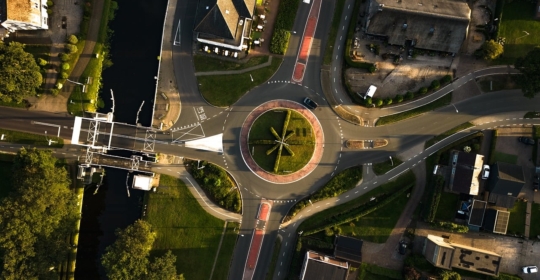
SBTN Pilot: Carrefour
Company:
Carrefour
Carrefour is one of 17 companies that submitted science-based targets for nature – for both freshwater and land – as part of a pilot which took place from May 2023 to June 2024. This case study is part of a series about the findings from those validation pilot companies.
>>View the full pilot summary report
“Applying the SBTN methodology has enabled us to confirm that our biodiversity strategy is heading in the right direction, and to strengthen the scientific support for our objectives in terms of impacts on biodiversity.”
Context and motivation
Carrefour is one of the world’s leading food retailers, operating across 40 countries worldwide and serving 80 million customers a year. Carrefour has been using the SBTi methodology to set climate targets for several years. In line with this, and in order to take a more holistic approach to environmental issues, Carrefour has committed to deploying the SBTN methodology.
Through SBTN, Carrefour wants to ensure that its actions bring about a genuine ecological transition. Carrefour also has a long-standing partnership with WWF, and has previously made efforts to promote sustainable fishing and eliminate deforestation from their value chain.
Actions taken
Carrefour conducted a comprehensive materiality assessment (Step 1 of SBTN’s methods) across all of the group’s activities, and found that the vast majority of its impacts were upstream.
When prioritizing their impacts (Step 2), they were able to use their existing biodiversity footprinting data to help prioritize commodities. For setting targets (Step 3), they focused on 15 Carrefour-branded food products in France due to data availability and as a proof-of-concept for their suppliers.
Carrefour achieved this through the flexibility of SBTN’s business unit approach. To assist with the pilot, Carrefour drew on the help of WWF and the consulting firm I Care, and had to expand their data collection and traceability in order to collect the required data for SBTN.
Findings
As a retailer, Carrefour were aware that the majority of their impacts were in their upstream operations.
In order to respond to the first SBTN steps, Carrefour carried out a major sector analysis for 13 commodities in order to improve information granularity throughout its value chain: beef, coffee, palm oil, soy, dairy products, maize, rice, cotton, pork, nuts, poultry, eggs and cocoa. Some of these, such as soy, cocoa, and beef, were already being addressed by existing Carrefour policies, while others, such as maize, rice and french pork, were not previously on their radar.
Several departments were involved in the sector analysis, including purchasing, quality, industry, and production. A great deal of collaboration and mobilization was required to bring them together towards the same goal: understanding the environmental impact of the targeted commodity and acting together to avoid or reduce this impact on a local scale.
Challenges
Specific data challenges included ensuring complete and consistent data across a range of different commodities and stakeholders. The quality of the data collected varied according to the level of maturity of the supply chains, and it was sometimes necessary to mobilize secondary, and therefore less precise data (e.g., public databases, extrapolation of information from LCA tools, etc.) while defining a strategy to improve this knowledge in order for Carrefour to subsequently refine its results.
Carrefour believes that the land footprint target may not account for lower-intensity, lower-yielding forms of agriculture that can have biodiversity benefits on farmland. They would also appreciate guidance on how to aggregate localized targets to the group level.
Benefits of process and next steps
For Carrefour, applying the SBTN methodology has helped them understand how the company impacts biodiversity, and how far it has to go to ensure that the business does not exceed planetary boundaries. SBTN has helped to accelerate Carrefour’s understanding of its supply chain, and underscored the vital importance of traceability in understanding impact, defining targets, and identifying actions.
SBTN has helped Carrefour start to address impacts for commodities such as rice and french pork that were not previously on their radar. Through SBTN, Carrefour has also identified place-based targets for the first time, which is important because for nature it matters where the target is set so that the most acute impacts are addressed. Participation in the pilot allowed them to mobilize and engage teams across their organization on nature topics, and it has helped them meet the expectations of investors and NGOs.
They also found that the SBTN pilot prepared them well for meeting the requirements of the CSRD because of the thoroughness of the method. For Carrefour, the CSRD highlights the work that has long been carried out on biodiversity, particularly the SBTN results.
Advice for other companies
- Get ahead of SBTN requirements by ensuring that initial efforts have been made to improve supply chain traceability, particularly for High Impact Commodities, and that sufficient resources are allocated to it.
- Get started on assessing your nature impacts even while you are preparing or before you are ready to take part in SBTN, as you will learn things that will save you time in future.
Information for this case study has been provided by the company and supplemented with content from the WWF (2024) report “Integrating Companies Within Planetary Boundaries: Feedback from the first companies to set Science Based Targets for Nature (SBTN)”.
>> View the full pilot summary report
>> Learn more about setting science-based targets for nature



